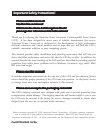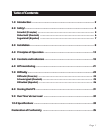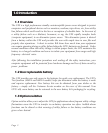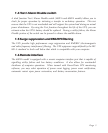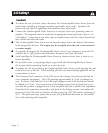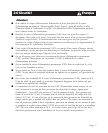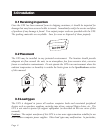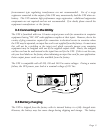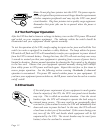
Page 2
1.0 Introduction
1.1 Overview
The UPS is a high performance standby uninterruptible power source designed to protect
computers and peripheral devices such as monitors, modems, tape drives, etc. from utility
line failures which could result in the loss or corruption of valuable data. In the event of
a utility failure such as a blackout, brownout, or sag, the UPS rapidly transfers loads
(computer equipment) to an alternative power source. This alternative power is derived
from a battery within the UPS and provides the user with ample time to save files and
properly close operations. A chart in section 9.0 shows how much time your equipment
can remain operating during a utility failure before the UPS’s batteries are drained. Under
normal conditions when the utility voltage is within proper limits, the UPS maintains the
battery in a charged condition and serves to isolate your equipment from surges and high
frequency electrical noise.
After following the installation procedures and reading all the safety instructions, your
computer equipment will be protected from hardware damage and loss of data caused by
power problems.
1.2 User replaceable battery
The UPS provides user-safe access to the batteries for quick, easy replacement. The UPS's
Test function (400VA and 600VA models) helps you determine when the battery is weak
and requires replacement. New battery kits can be obtained from your dealer or the
factory — simply call the Customer Service number on the cover of this manual. Your
UPS's old, worn battery can be returned in the new battery kit's packaging for recycling.
1.3 Option switches
Option switches allow you to adjust the UPS for applications where frequent utility voltage
fluctuations cause the UPS to transfer to on-battery operation too often. Audible alarm
functions can be altered so that warning of utility failure or low battery conditions are
given when desired.




